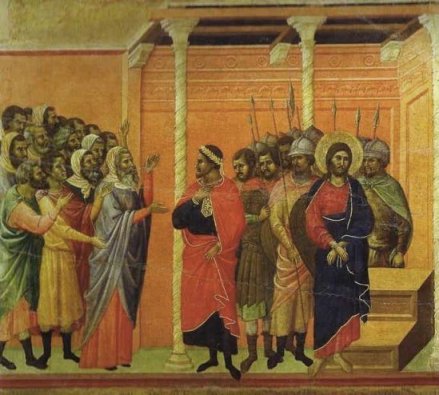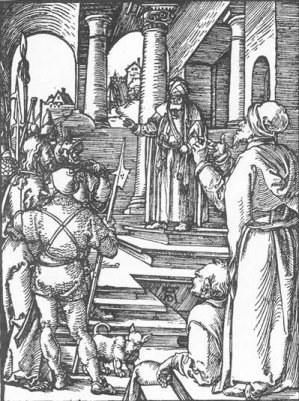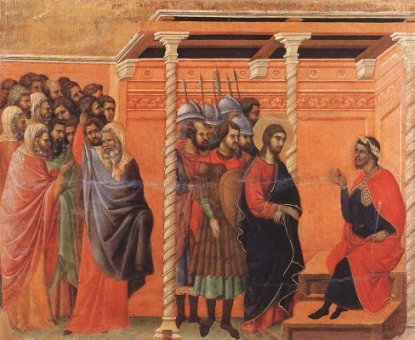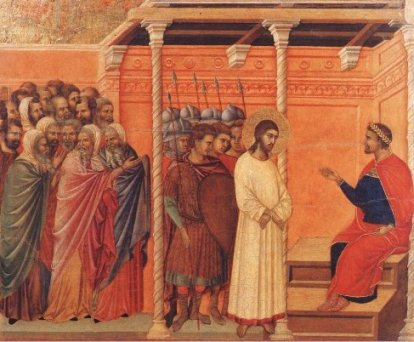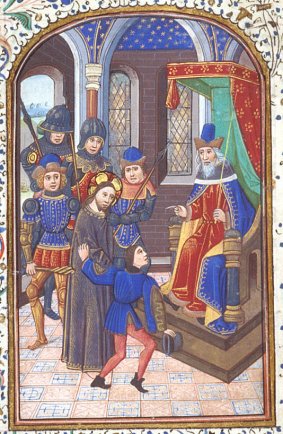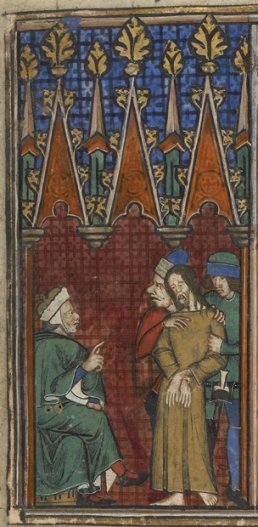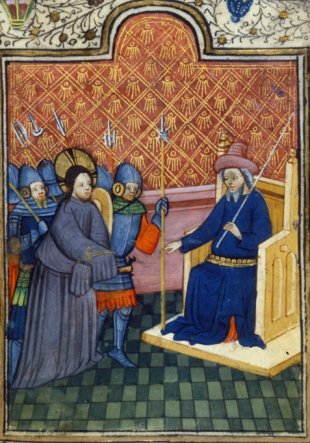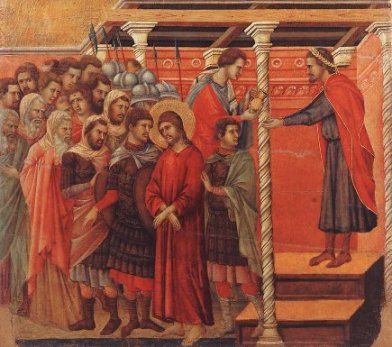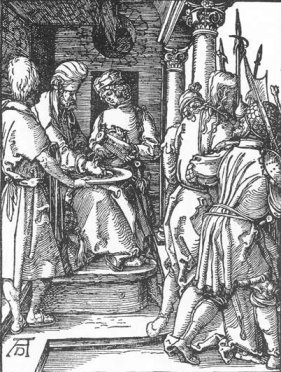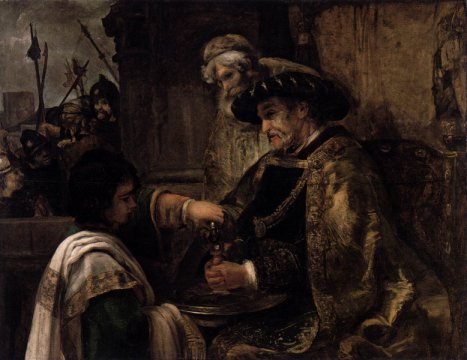|
The Passion of Christ |
|||
|
Christ Before Pilate |
|||
|
Once
again, Duccio and Durer are our most reliable chroniclers, though
neither stick to just one gospel account. Both artists open with Pilate coming out of the building to meet the Chief priests. This is in accordance with John's timetable; 'and they themselves went not into the judgment hall, lest they should be defiled; but that they might eat the Passover.' (John 18 v 28) |
|||
|
|
|
||
|
Duccio goes into more detail, and here he is referring to Luke. The scene moves indoors, for the first interrogation. (below left) The High Priests are shown looking on from outside, following every word. Duccio then takes us to the appearance before Herod, (see previous page) and then back to Pilate again (below right). Note that Christ is now 'gorgeously arrayed' in the cloak in which Herod dressed him. (Luke 22 v 11) |
|||
|
|
|
||
|
Most versions of 'Christ before Pilate' offer a generalised scene, usually indoors. Here are some images taken from two late medieval books of hours and a psalter from the British Library. |
|||
|
|
|
|
|
|
Pilate washes his hands This very familiar incident appears in just one gospel - that of Matthew. Ceremonial washing was and is a key tradition in Jewish culture - could this be an example of Matthew seeking Old Testament references that would be familiar to a Jewish Audience? Here's Deuteronomy 21:6-9 And all the elders of that city, that are next unto the slain man, shall wash their hands over the heifer that is beheaded in the valley: And they shall answer and say, Our hands have not shed this blood, neither have our eyes seen it. Be merciful, O Lord, unto thy people Israel, whom thou hast redeemed, and lay not innocent blood unto thy people of Israel's charge. And the blood shall be forgiven them. So shalt thou put away the guilt of innocent blood from among you, when thou shalt do that which is right in the sight of the Lord. Here's Duccio and Durer again; then, for a change, a version by Rembrandt. |
|||
|
|
|
||
|
|
|||
|
Pilate's Wife Finally, another incident featured just in Matthew: When he was set down on the judgment seat, his wife sent unto him, saying, Have thou nothing to do with that just man: for I have suffered many things this day in a dream because of him. (Matthew 27 v 19) This has for the most part been ignored by artists, but James Tissot had a go at it. |
|||
|
|
|||
|
I've mentioned my lack of enthusiasm for Tissot before, and this rather murky image doesn't do much for me, but credit is due to him for going where other artists won't. |
|||
